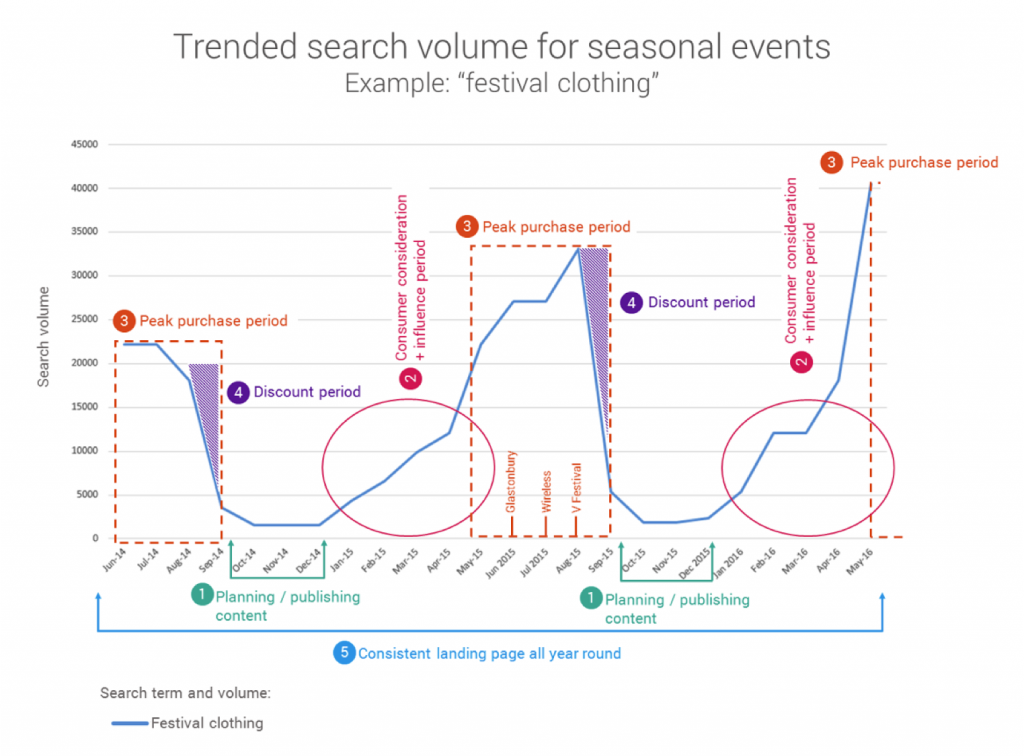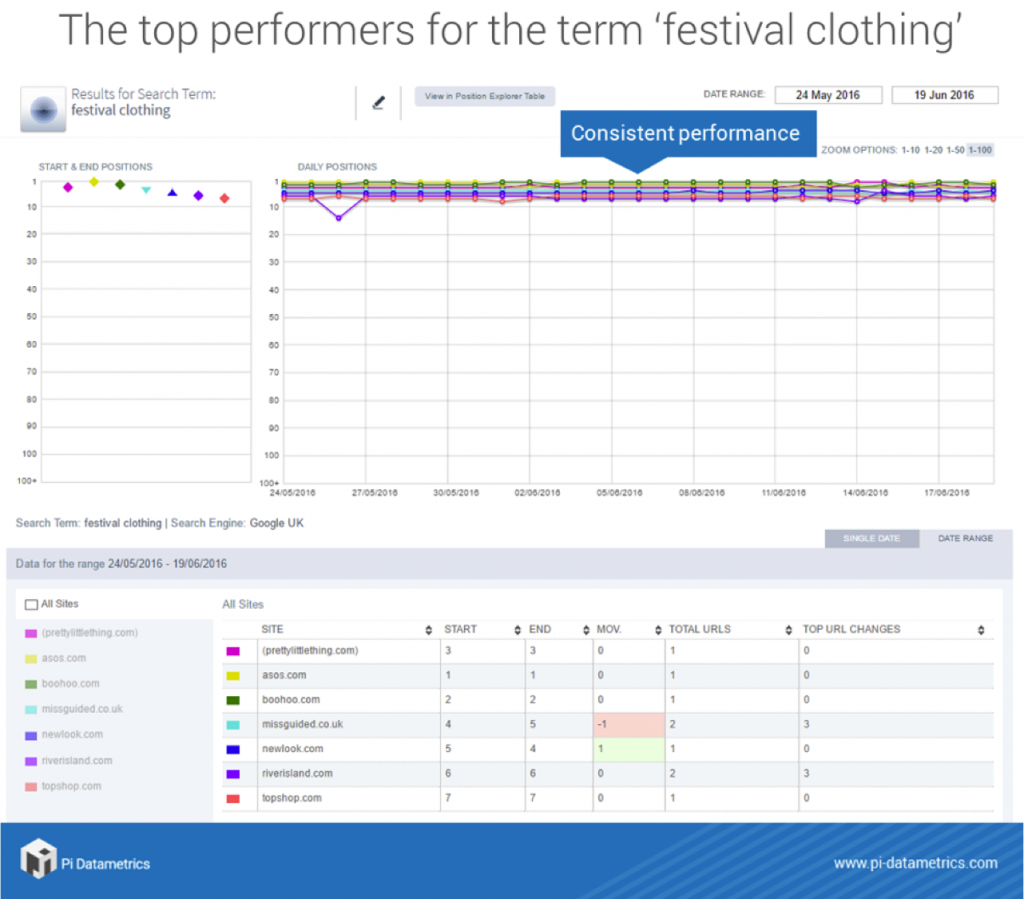Summer in the UK means festivals, and there are plenty to choose from again this year.
Festival goers need the right equipment: clothing and camping equipment, as well as waterproofs for the English weather.
Thanks to data from PI Datametrics, I can see which sites have prepared for the festival season, and which ones have room for improvement.
Seasonal SEO strategy
We’ve looked at seasonal SEO before, and it’s all about optimising for key periods of the year, and ensuring that your site is in prime position to profit from the spike in interest and search traffic which follow.
Optimisation need to be done in advance, and sites need to hone their internal linking strategies to avoid any cannibalisation of their own search traffic.
This means creating hub or landing pages for target search terms, and linking back to these pages using the target keywords.
Festival search trends
Google Trends data gives a good indication of the products that people are likely to be looking for and the peaks in interest.
To take ‘festival clothing’ as an example, here are some key trends:
- Festival wear terms peak yearly in May, June, July and August.
- In 2015 ‘festival clothing’ peaked in August and was searched 33,100 times.
- In May 2016 ‘festival clothing’ was searched 40,500 times.
- ‘Festival clothing’ has risen 82% from May 2015 – May 2016.
This kind of trends data can be valuable to plan your content and SEO strategy round (see above).
- Content needs to be planned and published well ahead of the target event or season to allow time to optimise it for searchers.
- It’s important to be there when customers are searching for related products and considering purchases.
- This is the peak purchase period. If you have the right strategy, this is when it can pay off.
- The discount period is a time when interest is declining, but still comparatively high. A good time to reduce excess stock.
- Don’t delete the page once the season has passed. Keep it fresh and ready for next year so the planning doesn’t go to waste.
Example 1: ‘festival clothing’
This is what search performance should look like ideally. The sites here all rank consistently for the selected term, and they’re competing against each other, not their own content, for search rankings.
ASOS is the top site for the term above, and this is the landing page for the term. What’s key here is that the retailer has created this dedicated page and linked to it consistently.
On the flip-side, failing to plan correctly produces this kind of inconsistent performance.
Example 2: festival essentials
These are the top performing sites for the term:
- Gigwise
- Mountain Warehouse
- Skiddle
- Tesco
- Her Packing List
- All Noise
- Go outdoors
As we see below, they all rank consistently, more or less, for the five months before the peak for festival-related traffic.
One of the top performers, Mountain Warehouse, seems to have planned its content strategy very well.
The is the page Google returns for ‘festival essentials’, a checklist of key items, all of which link to the relevant product categories. As I write, it sits at number three on Google UK, in prime position to attract product searches.
By contrast, Millets – though it has a festival landing page – has done less work to optimise the on-page copy.
It also seems to have neglected internal linking. It has lots of content related to festivals and key products on its blog, and therefore plenty of opportunity to link consistently to the landing page above.
There’s a lot of content here, and many opportunities to link to the landing page, or even relevant product pages, but not a single link to a product (or product category) sold on the site.
For comparison, look at this content page from Mountain Warehouse, which links back to the products it mentions.
It’s very odd, as Millets has got certain parts of the strategy right, but has totally failed to join it up. We have some useful content around festivals, and a landing page for the term.
All Millets needs to do is to link consistently from the content to the landing pages. It’s a real missed opportunity.
In summary
The examples above show the importance of a unified SEO and content strategy for seasonal events.
It’s about knowing when the seasonal traffic spikes are likely to be, the key terms to target, and then implementing the right strategy well in advance.
This also underlines the importance of content and SEO teams working well together. On Millets, it looks like the teams producing the content have no idea of the SEO strategy at all.
The article SEO in the festival season: which retailers have the right strategy? was first seen from https://searchenginewatch.com









No comments:
Post a Comment